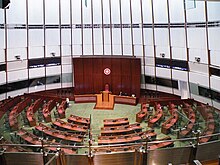


![]() listen)), officially the Hong Kong Special Administrative Region of the People's Republic of China, is located on the eastern side of the Pearl River estuary in South China. With over 7.4 million Hongkongers of various nationalities[c] in a territory of 1,104 square kilometres (426 sq mi), Hong Kong is the fourth-most densely populated region in the world.
listen)), officially the Hong Kong Special Administrative Region of the People's Republic of China, is located on the eastern side of the Pearl River estuary in South China. With over 7.4 million Hongkongers of various nationalities[c] in a territory of 1,104 square kilometres (426 sq mi), Hong Kong is the fourth-most densely populated region in the world.


